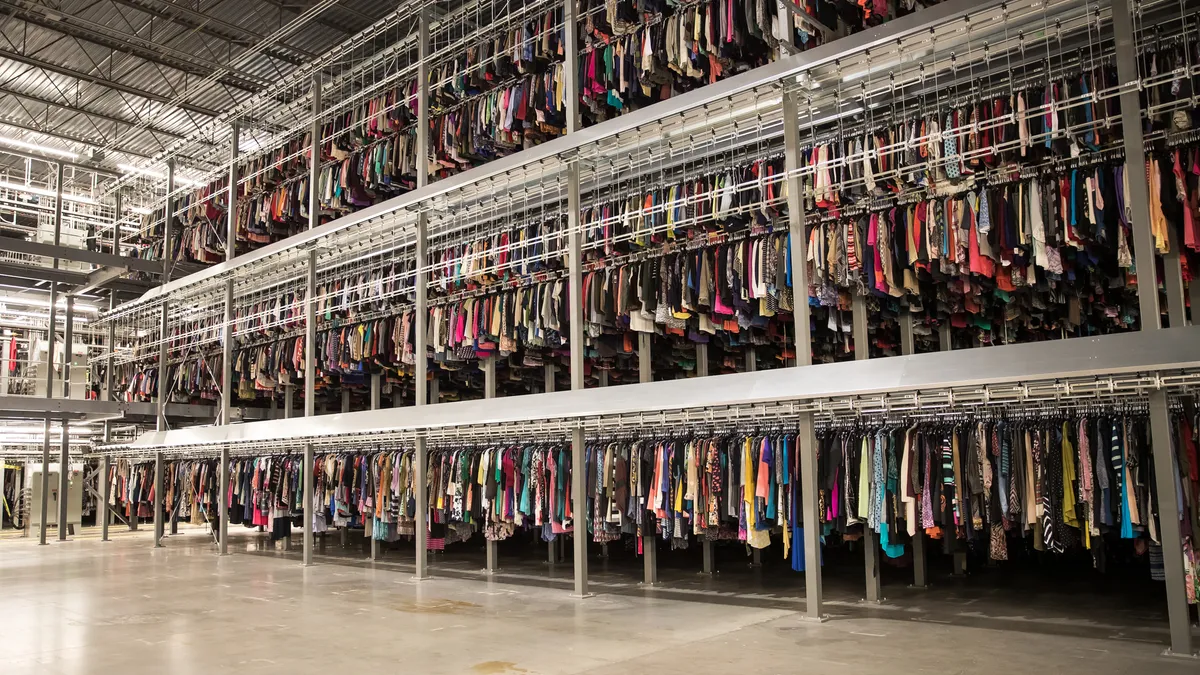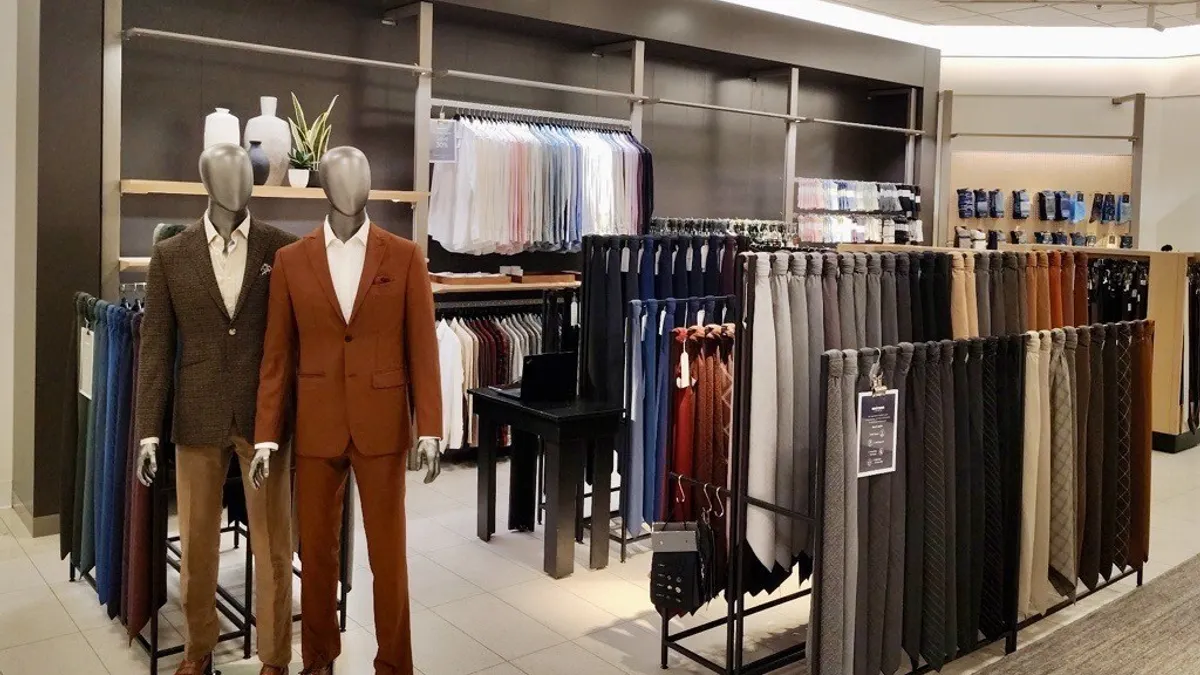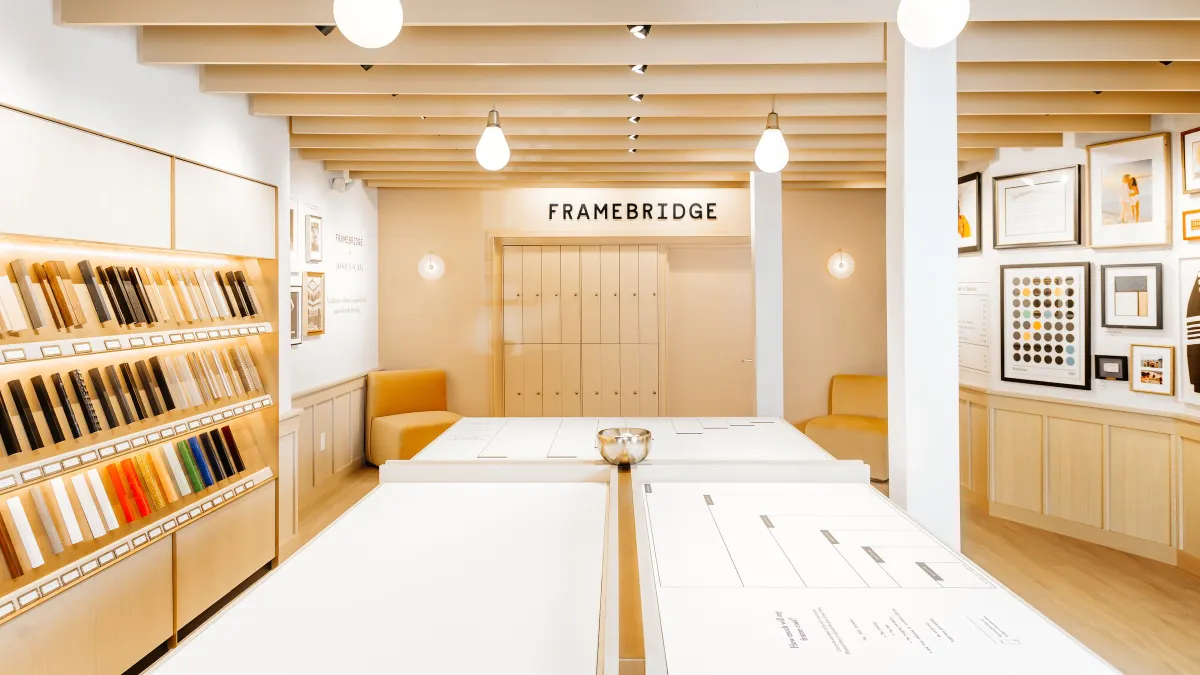While resale has been around for years — through traditional thrift shops, Craigslist and eBay — the digital, mobile-focused platforms really took off in popularity last year.
Online resale marketplace ThredUp partnered with a number of brands, including Madewell, Gap, Macy's and J.C. Penney. Legacy department store Lord & Taylor was acquired by rental and resale platform Le Tote late last year for $100 million. And Urban Outfitters announced in May 2019 that it would launch its own apparel rental company, Nuuly.
These initiatives were driven by demand as the circular economy and sustainability increasingly became valued among consumers, as well as to drive more foot traffic into stores, particularly among younger demographics. "The RealReal is really being driven by a lot of millennial adoption and Generation X, Y," Chris Ventry, vice president in the consumer and retail practice of SSA & Company, told Retail Dive in an interview. "So, a lot of these retailers were hoping to bring in a traffic source into their stores and fill potentially unproductive retail footprint space."
Industry experts toward the end of last year projected the circular economy would continue to grow in 2020. But then the coronavirus pandemic hit and retailers put a lot of existing plans, including those focusing on sustainability, on pause in order to deal with more immediate concerns.
"That's why you're not seeing that many announcements currently," Ventry said. "But I don't think it's really taken the steam out of the recommerce market or circular economy at all."
Addressing cleanliness concerns amid a global health crisis
The coronavirus pandemic came with a lot of uncertainty, particularly around how the disease can be transmitted. Before states and local governments announced lockdown orders, resale companies sent notices to customers to try to ease worries around wearing used garments.
"New clothes, essentially, can be dirtier than they look and if you buy a new item at a department store, you know that very well could have been tried on multiple times, it could have even been bought and returned, it's been left on floors or dressing rooms."

Chris Ventry
Vice President, Consumer and Retail at SSA & Company
On March 4, Rent the Runway emailed details regarding its cleaning processes to customers and cited Harvard Health in stating that there was no reason to believe the coronavirus could be transmitted through soft surfaces. "Our cleaning agents and practices are designed to kill viruses such as the common cold and flu," the email stated. "While scientific information is still developing, we have no reason to believe that our processes are ineffective against COVID-19."
Similarly, Le Tote sent an email to customers later in March outlining its own cleaning protocols, stating that they are in line with CDC guidelines. And while buying or renting clothes that another person has worn might make a consumer uneasy amid a global health crisis, Ventry said many "new" garments in stores aren't much different.
"I like to remind people that hygiene concerns have existed in the past as well as today, in terms of even retailers that are selling new," Ventry said. "New clothes, essentially, can be dirtier than they look and if you buy a new item at a department store, you know that very well could have been tried on multiple times, it could have even been bought and returned, it's been left on floors or dressing rooms. So, the adage that kind of wash before you wear remains strong."
The retailers that made their messaging clear and made a "concerted effort to provide true deep cleaning" might have a competitive advantage, Ventry said. But he warns that comes with a caveat: peer-to-peer resale platforms. "It's the responsibility of the person with whom you're communicating with on the mobile app to send you the product. So that might be more open to hygiene concerns."
Why consumers are drawn to these models
By ThredUp's account, the secondhand market is expected to reach $64 billion by 2024, with $28 billion coming from traditional thrift and donation, and $36 billion coming from resale, according to the report. To put that into perspective, the total market reached $28 billion last year with $7 billion of that coming from resale.
So who's driving this trend?
"It's definitely starting from the younger generations," Alex Fitzgerald, principal in the consumer practice of Kearney, told Retail Dive in an interview. "But even again, in this recent Earth Day, we are seeing older demographics being more conscious about it as well, and it's starting to shift for consumers across the board."
According to ThredUp's report, 70% of women have or are open to shopping secondhand, up from 64% in 2018 and 45% in 2016. Further, 80% of Gen Z consumers who responded to the survey said there's no stigma associated with buying used goods, and 43% of consumers said they will shift their spending habits to more sustainable brands in the next five years, up from 18% in 2018.
"There is an evolving expectation from consumers around, what is the voice of the brands that I am consuming? What do they stand for, and how does that reflect on me?" Fitzgerald said.
"Anytime there's any sort of economic impact, whether it's in the Great Recession all the way through to COVID-19, people will reevaluate what they spend and anything that has a compelling price-value equation for this cash-strapped and cash-conscious shopper will win out."

Chris Ventry
Vice President, Consumer and Retail at SSA & Company
But the resale market might attract older generations more widely as consumers face an economic recession further accelerated by the COVID-19 pandemic. With stores temporarily shuttering, many retailers were forced to make difficult decisions like laying off or furloughing employees.
"When we have economic uncertainty, higher unemployment, every general recessionary sort of environment … you're seeing a cutback in spending in terms of retail apparel," Ventry said. "The circular economy is rooted in a sense that as people purchase apparel again, they're going to be making much more of a considered purchase. And this consideration is also a positive sign for sustainability," Ventry said.
Four out of five consumers said they are open to shopping secondhand "when money gets tight," and that willingness is even higher among Gen Z shoppers (90%). Additionally, 79% expect to cut their apparel budgets over the next year, according to the report.
"With economic concerns, you're trying to figure out, what's really needed? What do they need to keep?" Ventry said, adding that by allowing consumers to sell unwanted goods, resale platforms can provide an extra stream of revenue for the user. "Anytime there's any sort of economic impact, whether it's in the Great Recession all the way through to COVID-19, people will reevaluate what they spend and anything that has a compelling price-value equation for this cash-strapped and cash-conscious shopper will win out."
What lessons retailers can learn from these platforms
Even with physical retail being widely open, COVID-19 cases surging in areas of the country may cause retailers to reclose or adjust their reopening plans.
And even with traditional retailers investing more into their online channels in recent months to help stem sales losses, the RealReal, ThredUp, Poshmark and other app-based platforms may be better positioned because they had existing technology that made the digital shopping experience enjoyable for consumers.
"It's not just due to the ability to provide product and value, but it's also due to an easy-to-use platform," Ventry said.
It's "the ease of use, the customer engagement, the loyalty factors" that keep consumers coming back to purchase used goods, even as retailers across the board are offering steep discounts, Ventry said.
But even further, a lot of the resale and rental companies have been able to recreate the "treasure hunt" experience online. For years, off-price retailers like Ross and TJX's banners have been able to capture that experience within their physical stores, which is one of the factors to their success in the industry. However, off-pricers have been slow to adopt e-commerce, with some forgoing it entirely, so when nonessential retailers were forced to shutter their stores, the segment had few selling options left.
"The ThredUps and the Poshmarks of the world — the fact that they had already invested in their digital and that they were able to offer that digital treasure hunt was very interesting," Fitzgerald said. "Some of the off-price retailers, and those who had relied on physical, this was an interesting juxtaposition between those two. It's probably an indication that we'll see off price start reconsidering their investments in digital and their ability to actually recreate the treasure hunt online."
Traditional retailers might have an opportunity, though, to use resale and rental platforms to their advantage as they grapple with mounds of unsold inventory. Those retailers may be able to sell overhang inventory through a reseller, similar to wholesale, Ventry said. "I think that is a possible avenue."
Particularly among apparel retailers, which have been disproportionately hard hit by the pandemic, exploring channels like resale and rental may be a means for survival. The sector has faced steep declines since last year with sales falling 52% in March, 89% in April and 64% in May, according to the U.S. Department of Commerce's retail sales figures.
"In this environment where apparel retailers are trying to figure out what they can do to get growth, I think everything is kind of on the table," Fitzgerald said.






















